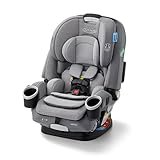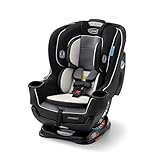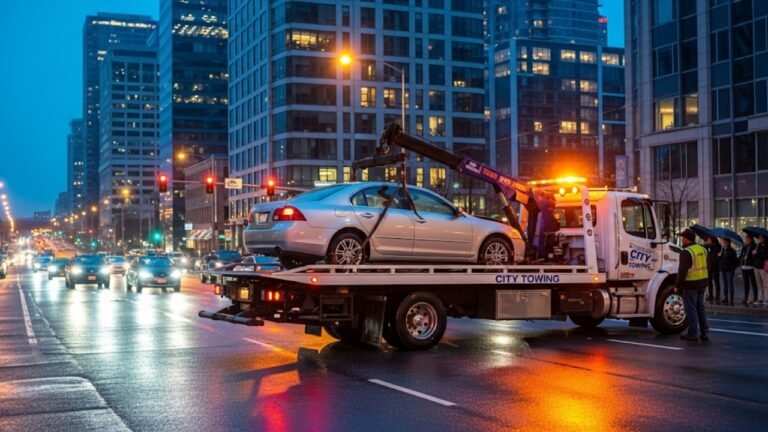Rope Towing a Car: A Complete Guide
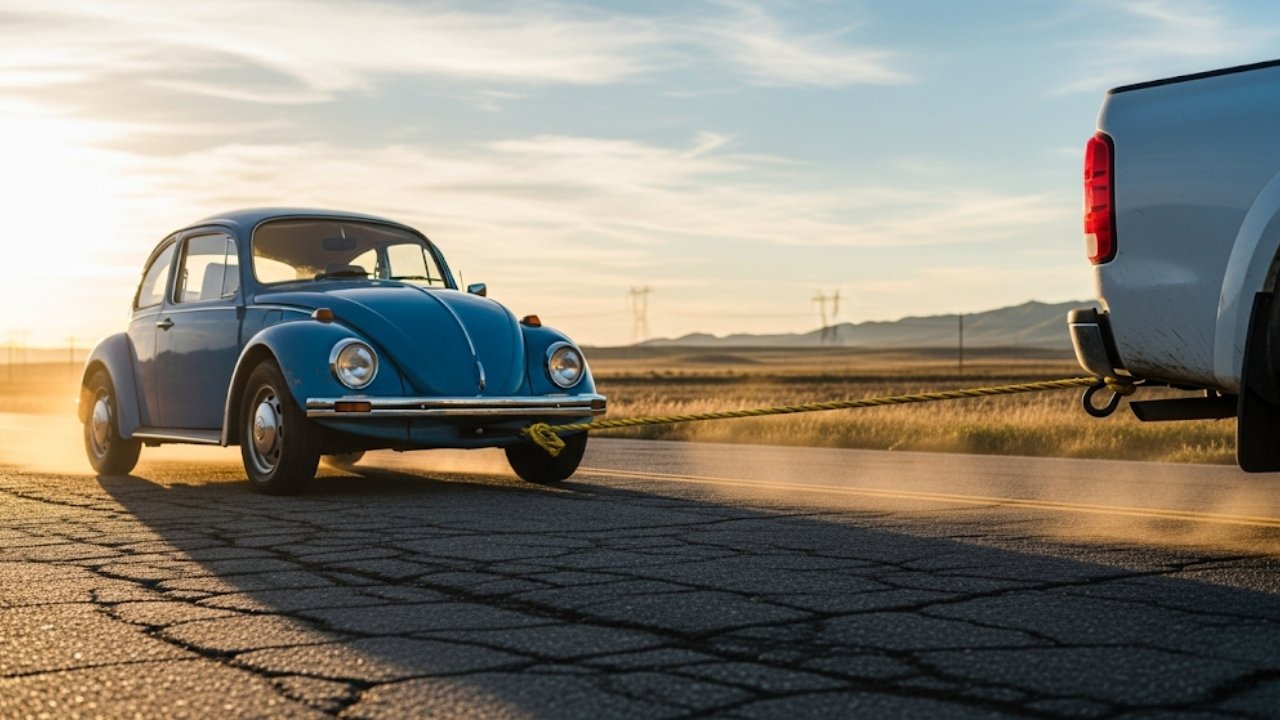
When your car suddenly breaks down in the middle of nowhere, your heart skips a beat. The first thought is usually, “How do I get this car home or to a mechanic without spending a fortune on a tow truck?” That’s when rope towing a car often comes to mind. While it’s not always the easiest solution, it’s a lifesaver when done right. In this guide, we’ll explore everything you need to know about rope towing—from safety tips and legal rules to personal stories and pro advice—so you can handle the situation like a pro.
Understanding the Basics of Rope Towing a Car
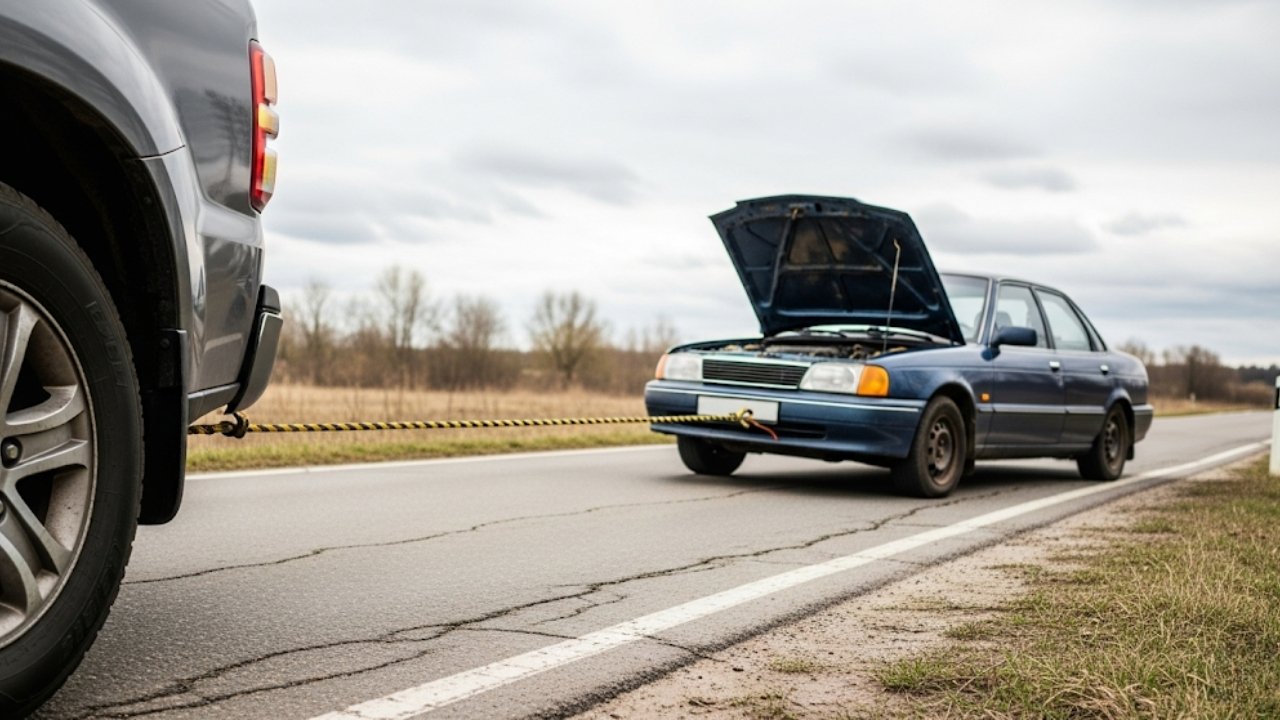
One of my earliest memories of rope towing was when my uncle’s old hatchback gave up near a small rural town. We didn’t have a tow truck nearby, so we used a thick nylon rope tied to my dad’s pickup truck. It was stressful at first, but with some patience and careful driving, we made it to a repair shop. That experience taught me that towing is not just about moving a car—it’s about trust, coordination, and awareness.
When Rope Towing a Car Makes Sense
Not every situation calls for rope towing. Sometimes, calling a professional tow service is safer and more practical. But there are moments when using a rope is the best option. Here are some common cases:
-
Short Distances: If you only need to tow the car a few blocks or to the nearest workshop.
-
Emergency Situations: When no tow truck is available, and you can’t leave the car behind.
-
Budget Concerns: If you want to save money on costly towing services.
-
Safe Road Conditions: Wide roads with low traffic make rope towing much easier.
A friend of mine once had his car stall just three streets away from his home. Instead of waiting two hours for a tow truck, I hooked his car to mine with a tow rope. It was quick, safe, and saved him nearly $100. The key is to know when rope towing a car is practical and when it’s better to leave it to the professionals.
Choosing the Right Rope for Towing
The rope you choose can make or break the experience—literally. Using a weak or frayed rope is like wearing flip-flops to climb a mountain; it’s asking for trouble. For safe rope towing a car, the rope must be durable, strong, and reliable. Here’s a quick table that compares common rope options:
| Rope Type | Strength Level | Best Use Case | Notes |
|---|---|---|---|
| Nylon Rope | High | General Towing | Strong and flexible but can stretch |
| Polyester Strap | Very High | Heavier Cars | Less stretch, more control |
| Steel Cable | Extremely High | Emergency Only | Very strong but heavy and hard to handle |
| Natural Fiber Rope | Low | Not Recommended | Breaks easily, unsafe for towing |
Whenever I prepare for a road trip, I keep a polyester tow strap in the trunk. It’s light, easy to use, and has saved the day more than once. Investing in a good rope is like buying insurance—you hope you never need it, but when you do, it’s priceless.
How to Safely Connect the Rope
Tying a rope between two cars may seem simple, but safety is all about the details. You can’t just knot it like you’re tying your shoelaces. Most cars have built-in tow hooks or loops near the bumper designed for this very purpose. Here’s a step-by-step process:
-
Locate the Tow Points: Look under the front of the car being towed and the rear of the car doing the towing.
-
Use the Right Knots: If your rope doesn’t have hooks, use a secure knot like a bowline. Avoid quick knots that might slip.
-
Check the Length: Ideally, the rope should be about 3–4 meters long. Too short and you risk hitting the lead car; too long and it may drag.
-
Add a Marker: Tie a bright cloth in the middle of the rope to make it visible to other drivers.
The first time I tried rope towing, I made the mistake of using an old camping rope. Halfway down the road, it snapped, leaving my cousin stranded. Since then, I always double-check the strength and security of the connection before moving.
Driving Tips for Rope Towing a Car
Driving while rope towing isn’t the same as a normal trip. It’s like walking a dog that’s bigger than you—every movement matters. Both drivers need to stay alert, communicate, and adjust their driving styles. Here are some golden rules:
-
Start Slowly: Avoid sudden acceleration. Move like you’re carrying a fragile vase.
-
Use Hand Signals or Phones: Stay in touch with the driver of the towed car.
-
Brake Gently: The lead car should brake early and lightly to prevent jerking.
-
Stay on Side Roads: Avoid highways if possible; stick to routes with less traffic.
-
Keep Speeds Low: 15–20 mph is ideal for safe rope towing.
One chilly evening, I had to tow my neighbor’s minivan. We used constant phone contact, and it made the process so much smoother. Without communication, even a small mistake could have turned into a dangerous situation. Remember, rope towing a car is about teamwork.
Common Mistakes to Avoid
Just like cooking with too much salt can ruin a good meal, small mistakes in rope towing can create big problems. Here are a few common errors to watch out for:
-
Using Weak Ropes: A rope not designed for towing can snap under pressure.
-
Ignoring Road Rules: Some areas have strict towing laws, and ignoring them can lead to fines.
-
Not Checking Brakes: The towed car must have functional brakes; otherwise, it’s dangerous.
-
Skipping Safety Gear: Reflective vests, hazard lights, and warning triangles are essential.
-
Driving Too Fast: High speeds make the rope harder to control and increase risk.
I once witnessed a situation where a driver tried towing his friend’s car using a thin rope meant for hanging laundry. Unsurprisingly, it snapped within a few minutes, nearly causing an accident. That day I realized how much planning and preparation matter in towing.
Legal Considerations of Rope Towing a Car
Before you grab a rope and start towing, check your local laws. Some places allow rope towing, while others ban it completely or require special conditions. For example, in many U.S. states, the towed vehicle must have working brakes and lights. In the UK, the law requires a visible “On Tow” sign on the back of the towed car.
Driving without following these rules isn’t just risky—it can land you with fines or even legal trouble. The last thing you want while helping a friend is a ticket from the police. Always do a quick check of the regulations in your area before setting off. Trust me, rope towing a car without knowing the law can turn a good deed into a nightmare.
Preparing the Towed Car Before Hitting the Road
Before you even start moving, make sure the car being towed is ready for the journey. Think of it like preparing a child for their first bike ride—you wouldn’t let them go without a helmet and training wheels. Similarly, a towed car needs some basic checks:
-
Switch to Neutral: Always put the gearbox in neutral so the wheels can roll freely.
-
Release the Handbrake: Forgetting this step can cause the rope to snap or even damage the towing car.
-
Check the Steering: The steering wheel should be unlocked so the wheels can turn with the road.
-
Turn On Hazard Lights: This alerts other drivers that your car is being towed.
-
Secure Loose Items: Anything dangling from the car might fall off and cause accidents.
I recall a time when a friend forgot to release the handbrake before we started towing. The smell of burning brakes filled the air, and we had to stop immediately. That small oversight almost cost him a new set of brake pads. It taught us that preparation is half the battle in rope towing a car.
Communication Between Drivers
Clear communication is the backbone of a safe towing experience. It’s like being on a hiking trail with a buddy—you need to warn each other of rocks, steep slopes, or sudden turns. When rope towing a car, both drivers must agree on signals and plans before starting.
Some easy ways to stay connected include:
-
Using Phones on Speaker: A quick call keeps you in touch without distractions.
-
Hand Signals: For situations where phones aren’t an option, agree on simple signals.
-
Headlight Flashes: The driver being towed can flash headlights to signal a stop.
Once, while towing my cousin’s SUV, our phone signal dropped. We quickly switched to hand signals out the window, and it worked like a charm. That day, I realized that having a backup communication method is just as important as having a strong rope.
Road Conditions That Affect Rope Towing a Car
Not all roads are created equal, especially when you’re towing. Smooth asphalt roads are your best friend, while steep hills or bumpy country lanes can be a nightmare. Consider these road factors before setting off:
-
Flat Surfaces: Ideal for safe and steady towing.
-
Wet or Icy Roads: Extremely risky, as braking distance increases.
-
Busy Highways: Not recommended due to high speeds and heavy traffic.
-
Hilly Areas: Demanding on both cars’ brakes and engines.
-
Unpaved Roads: Can cause the rope to snap or make the towed car unstable.
I once had to tow a car across a muddy village road after a rainstorm. It felt like pulling a sled through wet sand—slow, messy, and nerve-wracking. From that day, I promised myself to avoid rope towing a car on rough terrain whenever possible.
Essential Safety Tips for Rope Towing a Car
Safety should never be an afterthought. A simple mistake can put both cars and drivers at risk. Here are some golden safety rules to follow every time:
-
Use Hazard Lights: Make sure both cars have them on during the entire trip.
-
Avoid Night Towing: Visibility drops, making the rope harder to spot.
-
Check Mirrors Often: Both drivers should keep an eye on the rope’s tension.
-
Stop for Breaks: After every 10–15 minutes, pull over to check the rope’s condition.
-
Stay Calm: Panic can lead to sudden braking or swerving, which is dangerous.
Think of safety as the seatbelt of towing—it might feel unnecessary until the moment it saves your life. I’ve learned over the years that safe habits are non-negotiable when rope towing a car.
Pros and Cons of Rope Towing a Car
Like many quick fixes, rope towing has both advantages and disadvantages. Knowing both sides helps you decide whether it’s the right choice for your situation.
Pros
-
Affordable and saves money on tow trucks
-
Quick solution for short distances
-
Can be done with simple equipment
-
Convenient in emergencies
Cons
-
Not suitable for long distances
-
Requires both drivers to be skilled
-
Risky on busy or rough roads
-
Illegal in some areas
In my own experience, the biggest advantage has been saving money, especially when stuck far from town. But the downside is the stress—keeping the speed slow while cars honked behind me was no fun. It’s a reminder that rope towing a car is a tool, not a one-size-fits-all solution.
The Emotional Side of Towing
It may sound odd, but towing is as much emotional as it is mechanical. Imagine your car breaking down at night on a lonely road. The relief you feel when a friend shows up with a tow rope is priceless. Rope towing carries a sense of trust and teamwork that often gets overlooked.
I still remember the gratitude on my sister’s face when I towed her car home after she broke down on a busy highway. We were both nervous, but working together brought us closer. That’s why I believe rope towing a car isn’t just about moving metal—it’s about helping someone in need and strengthening bonds.
Frequently Asked Questions (FAQs)
1. Is rope towing a car legal everywhere?
No, the rules vary by region. Some areas ban rope towing on highways, while others require special equipment like “On Tow” signs. Always check local laws before towing.
2. Can I use any rope for towing?
No. Only use ropes or straps designed for towing, like nylon or polyester. Household ropes are unsafe and can snap under pressure.
3. How fast should I drive when towing?
The recommended speed is between 15 and 20 mph. Driving faster increases the risk of accidents.
4. Does the towed car need working brakes?
Yes, the towed vehicle must have functional brakes. Without them, stopping safely is nearly impossible.
5. Can you rope tow at night?
It’s not advisable. Low visibility makes it harder for other drivers to see the rope, raising the chances of accidents.
6. What if my car doesn’t have tow hooks?
You should avoid rope towing in that case. Attaching the rope to weak parts of the frame may damage your car.
7. How long can I rope tow a car?
Rope towing is best for short distances—ideally less than 5 miles. For longer trips, hire a tow truck.
Final Thoughts on Rope Towing a Car
At the end of the day, rope towing a car is a mix of skill, patience, and preparation. It’s not just about getting from point A to point B—it’s about doing so safely, legally, and responsibly. With the right rope, proper communication, and a cautious driving style, rope towing can be a reliable backup plan when life throws a breakdown your way.
But remember, it’s not a permanent solution. Use it wisely, and don’t hesitate to call professionals for longer or riskier journeys. After all, your safety—and that of others on the road—is worth far more than the cost of a tow truck.

